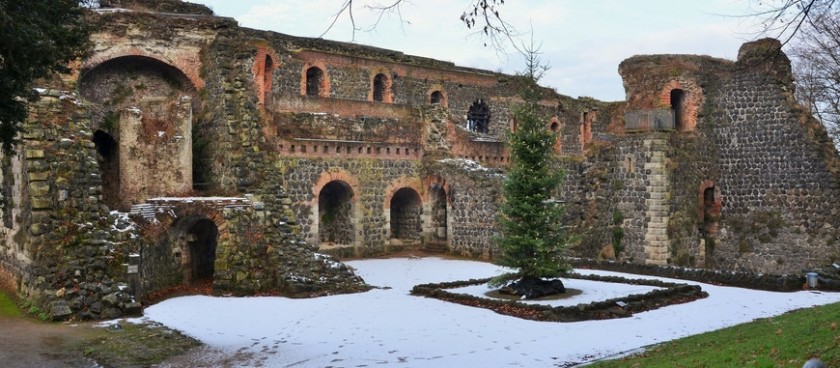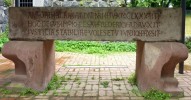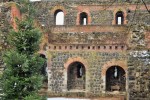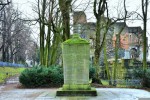Ruins of the Imperial Palace(Kaiserpfalz Kaiserswerth)
, Show all 9 places in Dusseldorf » Dusseldorf9- #DE61
- Burgallee, 40489 Düsseldorf, Germany
- +4921122973077
- kontakt@kaiserpfalz-kaiserswerth.de
- http://www.kaiserpfalz-kaiserswerth.de/
- Working hours*:
Good Friday (March 30) - October 31,
Daily 9:00-18:00 - Prices*:
Free - * - opening and closing times as well as entrance prices, are subject to alterations without notice. Visitors are advised to check before visiting.
- 51.2994501, 6.7319397 Copy to clipboard Copy
-
#Castles
The date of the foundation of Kaiserswerth is considered the construction of a local monastery in these places by Saint Swithberg on the lands he received as a gift from an important state nobleman of the Frankish state. According to unspecified data, the event took place in the year 700. At the time, it was an artificially created island. The embankment was well protected by a deep moat and palisade.
The site for the construction of the monastery walls was at the intersection of two "highways" - the central road from the Middle Ages (here the Teutoburg Forest and the place where the Ruhr flowed with the Rhine) converged with the ancient road from Neuss to Xanten.
The first time, the castle mentioned in the chronicles of the beginning of the 11th century. The text attests to the donation by Emperor Henry II, nicknamed the Saint, of Kaiserswerth, together with the castle located on it, to the Count Palatine Ezzo of Lorraine. Henry the Saint wanted to make peace with the nobleman - this explains such a generous gift from the ruler of the Holy Roman Empire. However, the gift was not privately owned for long - the deceased Otto II, son of Ezzo, had no heirs. The property again becomes the property of the imperial court.
During the reign of Henry III, the territory of the castle was significantly increased, but until the present, nothing remained of the buildings.
For a long time, the ruins provided the material for the construction of city buildings in the Kaiserstwert. The remains of the fortress walls were destroyed, first for the construction of the town hall, then - during the construction of a protective dam against frequent floods.
In December 1982, the palace ruins listed as a historical monument under state protection.
In the last decade of the 19th century, on the territory of Kaiserswerth, a scientist, Professor P. Klemen begins to carry out excavations and restoration. The work lasted almost 10 years. In August 1929, the historic district became part of Düsseldorf.
Several years later, the National Socialists gave the imperial palace the status of a memorial.
After World War II, in 1960-1970. the excavations were resumed, but now, simultaneously with the archaeological work, the conservation of the object was carried out.
The last to date work on the restoration of the monument was carried out quite recently, at the end of the 1990s, when the public was preparing to celebrate 1300 years since the foundation of the national landmark. It was possible to carry out repairs and conservation of only two parts of the imperial palace - north and south. Of particular interest is the wall on the western side of the castle, lined with tuff and basalt blocks. Its dimensions are striking even after several damages suffered: length - 50 m; height - 14 m; thickness - 6 m.
In the window openings, the arches decorated with a red stone of volcanic origin.
How to get to the Ruins of the Imperial Palace
Subway Kittelbachstraße - U79
Bus Klemensplatz - 728, 749, 751,760



